Cary’s Rare and Unusual Birds
Cary, NC — We are still being asked to stay at home through additional weeks but thankfully there is so much to observe about birds.
Many people are enjoying the sights and sounds of birds in their back yards. Have you been learning who these birds are? Perhaps you are becoming familiar with easy-to-find, highly common species like Cardinals, Robins, Goldfinches, House Finches, and Wrens.
I am always learning more about local birds, even during the quarantine. Restrictions have limited me to making observations close to home, and even while masked have been challenging myself to see and hear species I don’t know as well as I’d like.
Challenge: Spotting Cary’s Uncommon Birds
Let’s together set a new challenge in the coming weeks to find some bird species that may not be as obvious and are a little harder to find.
For this challenge, I selected seven species of birds that I have found to be in many homeowners’ backyards, but which people aren’t as aware about. Let’s meet them, and then you can see if one or more of these species will make an appearance in your back (or front) yard. Good luck!
Brown-Headed Nuthatches
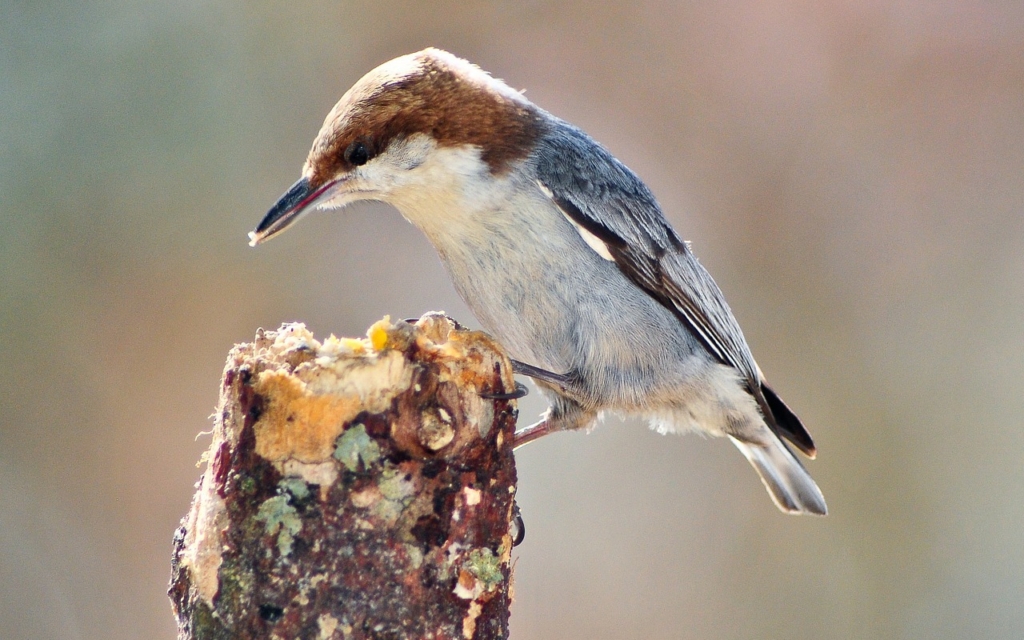
Brown-Headed Nuthatches don’t get the press their cousins the showy White-Breasted Nuthatches do and are often overlooked. These birds are small, often quiet, and might not visit feeders for long periods of time. They are fairly common where pine trees grow and love both seed and suet. Listen for their call which reminds me of a squeezed plastic dog toy. In fact, I fondly refer to Brown-Headed Nuthatches as charming “Squeaky Toys.”
Brown Thrashers

Brown Thrashers, or to me, “Old Yellow Eyes’” are fairly common birds in Cary, and most often can be found probing for insects beneath shrubs and low branches but will venture out onto open lawn from time to time. These are larger birds, about Robin-sized with long tails. If you can spot them, you may soon find that they are even better imitators of other birds than are our Mockingbird friends and sing the most delightful songs. These birds can easily be attracted to suet feeders.
Cedar Waxwings
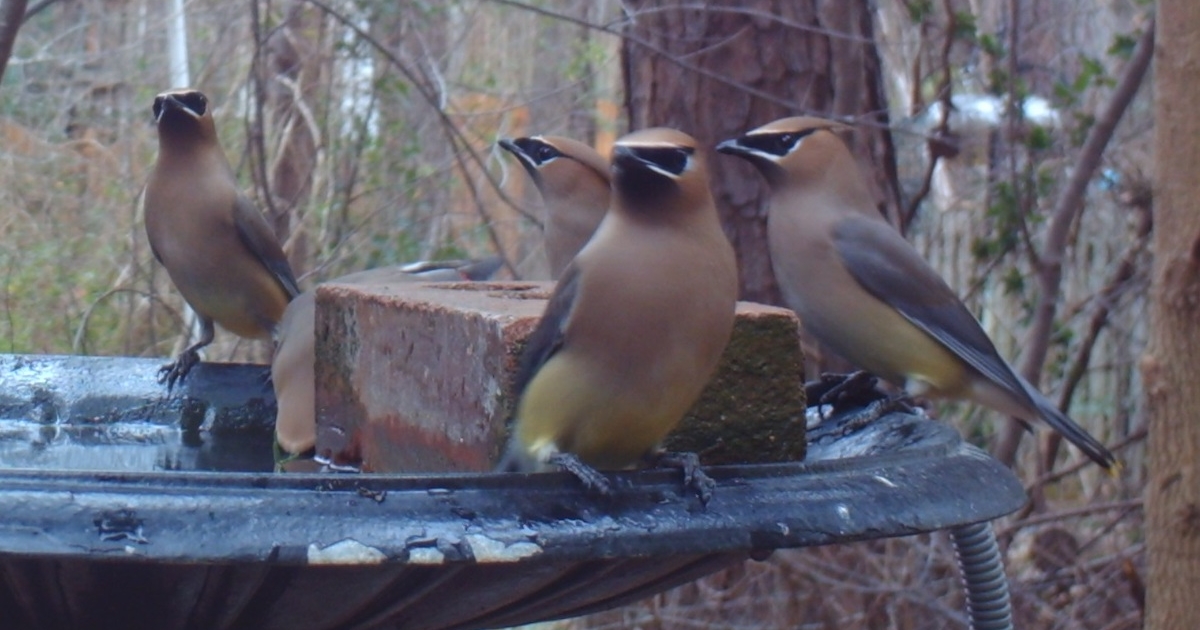
Cedar Waxwings have stunning plumage and vivid colors, but they are a challenge to find! They tend to move about in flocks and might not be in your yard but once or twice a year. Your odds improve if you have fruiting trees and shrubs because waxwings adore fruit. Look for birds, almost always in a group, that resemble Cardinals but have no deep reds but do have bandit-like masks.
Eastern Towhees
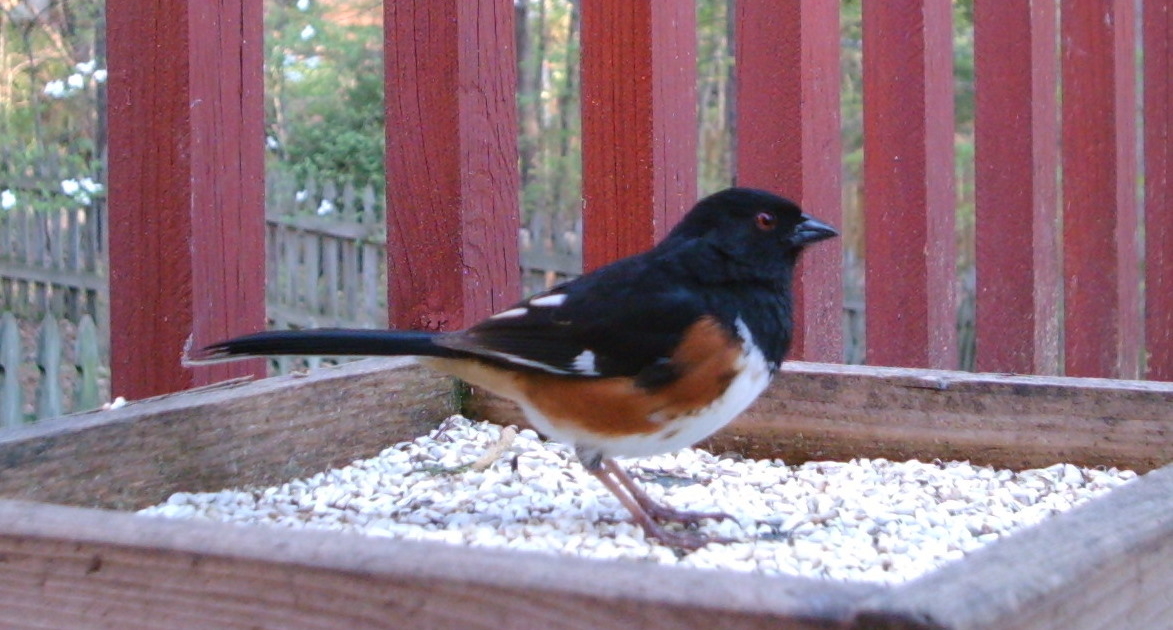
The Eastern Towhee is, I think, the most striking back yard bird people don’t tend to see. One reason is that the Towhee likes to hide a lot, lurking under shrubs and trees where it finds its food. Males and females both have gorgeous plumage, although quite different. The male has more black tones, the female more golden-brown. I don’t see them on feeders much, although they will look for stray seeds on the ground beneath feeders. If you are attentive, listen for the male’s distinct “Drink Your Tee-e-e-e-a” call and you’ll find one perched higher up, sometimes in plain sight.
Gray Catbirds
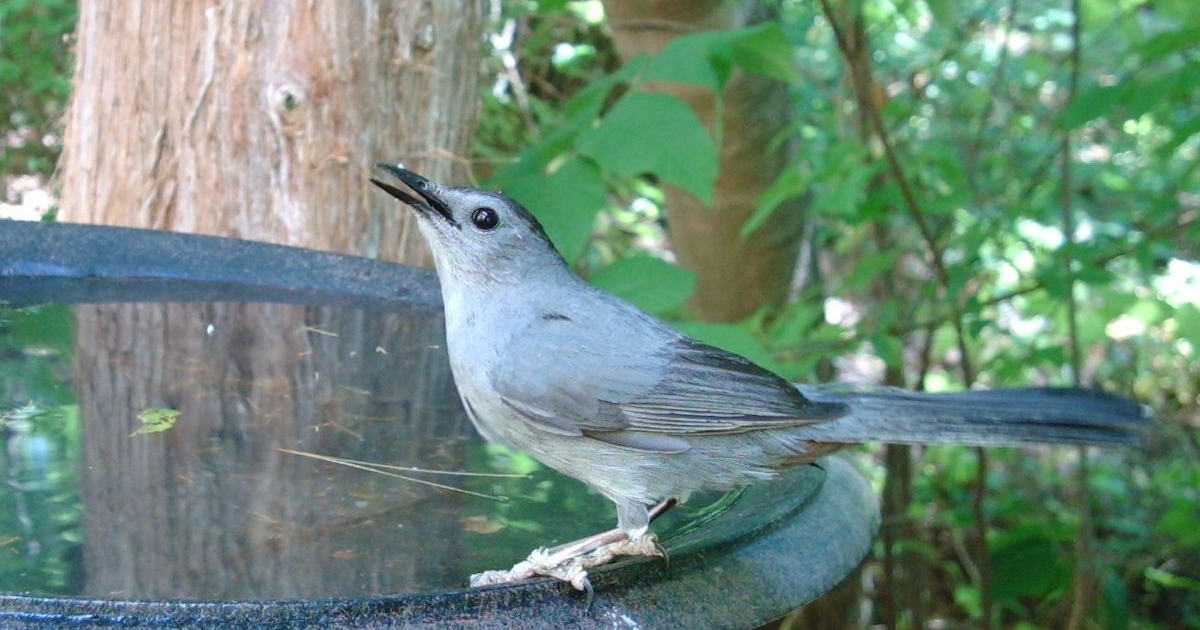
Gray Catbirds are extremely common here in summer, but I am surprised how many people don’t notice them. There’s nothing like them: mouse-gray in color with a black “beret” on the head. Put out suet, or have fruiting shrubs or trees in your yard and you will find catbirds quite easily as they are readily attracted to such foods. They do seem to be inquisitive and curious and don’t frighten nearly as much as other birds. You will want to listen for them in trees: Catbirds are noisy! An iconic call of theirs sounds like a cat’s meow or cry.
Pine Warblers
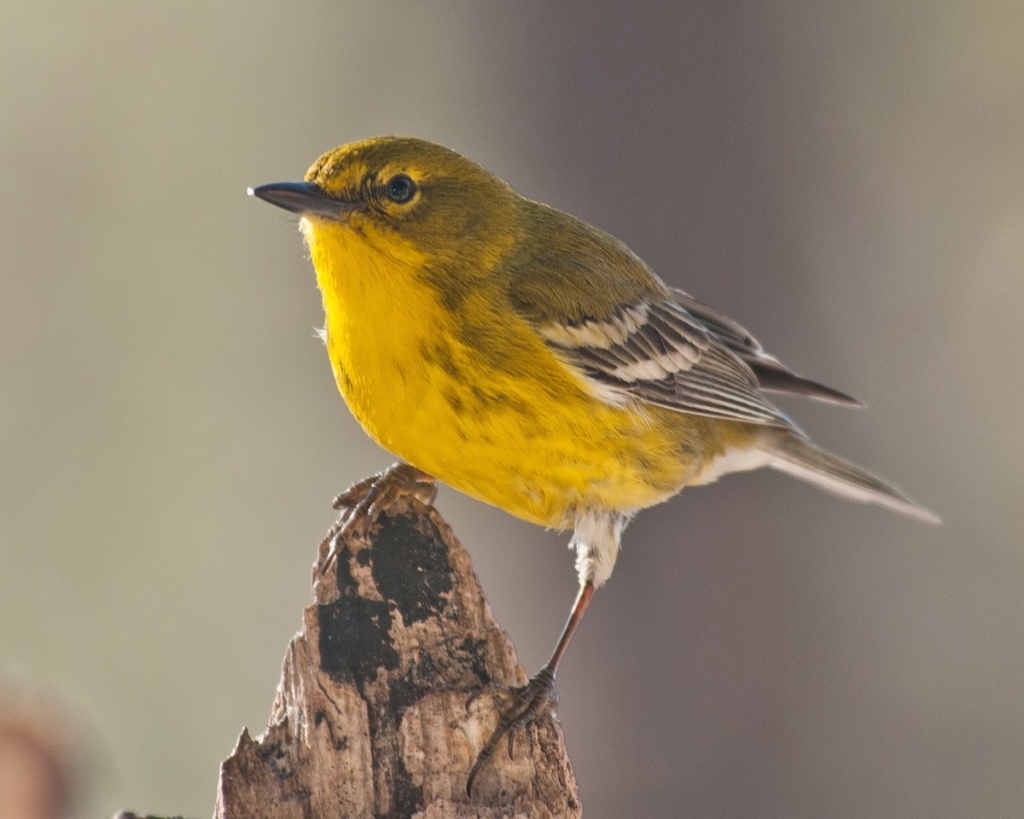
There are many warblers that come to central North Carolina in the summer. The easiest to see in summer at home is the Pine Warbler. If you live close to pine trees and put out suet for birds, you’re almost certain to attract this striking yellow-gold songbird. My experience is that they won’t visit feeders often except when feeding newly hatched young. However when they do visit it is a memorable experience. Don’t confuse these birds with Goldfinches, which are more canary-yellow in color.
Song Sparrows

Song Sparrows have become more common in our area over time and are now found in many neighborhoods year-round. They may not be much to look at with muted browns as their prominent color palette, but their songs and calls are breathtaking and to me, more than any birds’ song evokes Springtime. Sparrows are hard to tell apart. One special feature of Song Sparrows is the diamond-shaped dark “bib” they wear. These birds like to perch on trees at the edge of open spaces and sing their little hearts out. Otherwise, they’ll look for food on the ground underneath shrubs.
Story by David R. Lindquist. Song Sparrow photo by Ashley Kairis, photos of the Pine Warbler and Brown-Headed Nuthatch by TheSoarNet, all others by Lindquist.
All the Cary news every day since 2009. Subscribe.

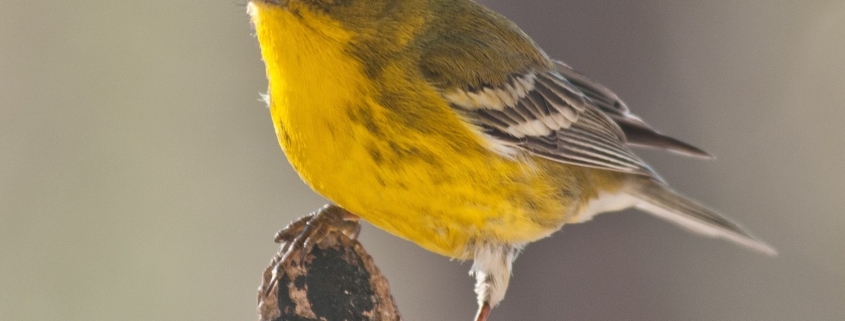


As always David you have provided vivid descriptions and AWESOME photos of fun birds to look for. What a wonderful article for our readers
I have numerous bird species in my yard this Spring. I was very fortunate to see a couple of Brown Thrashers at my feeders. They are beautiful, majestic birds.
One day, last week, I saw so many different birds over a total of no more than an hour or two, it felt like I was in Heaven. Here are just some of the species I saw: Brown Thrashers, Northern Cardinals, beautiful Chipping Sparrows, White-breasted Nuthatches, Carolina Chickadees, American Goldfinches, Tufted Titmice and a few birds that I did not get to identify, because they ate and quickly flew away. Not to mention squirrels than jump more than six feet to land on my bird pole and eat from the feeders and one pair of wild rabbits (just one time.) The highlight for me was from standing on my screened-in porch for a short while. I happened to be about 15” from my outdoor Hummingbird feeder, when I heard the hum and then saw the first Ruby-throated Hummingbird of the year drink from the feeder! I forgot just how loud they can be when standing still, so close to it. I just wish I could have taken a picture of it through the screen!
It’s been over 16 years since my wife passed away and I hung up any feeders. I have one Hummingbird feeder, two large seed feeders and a dual feeder that allows for two suet cakes. I purchased them in late April and early May.
Finally, I want to help others by letting them know about the Cornell Lab of Ornithology’s two bird identification apps. The first one is what I mostly use when I am unsure of a bird’s species. It is mostly for beginner or intermediate birders called ‘Merlin Bird ID’ and lets you identify birds from pointing your phone’s camera, using a bird photo from your library, or describing the bird, within the app. It also let you browse and explore birds. The database is huge! It works great. There is another app available called ‘eBird’. This is mostly used for advanced birders, when one is doing a several day bird count. I have not used it yet. Both apps are free, but the Cornell Lab of Ornithology is supported by donations and memberships. Please donate and/or join to help them out.
I hope people will find my long-winded story of interest. As someone who lives alone and in the high-risk category, please follow our state and local guidelines for CoVID-19. Stay home, stay healthy and safe, save lives. And, please wear a face covering/mask to protect others when in public! It is meant to be used just in case you are asymptomatic or tested positive for the virus. Please think of other people! Thank you very much!!!